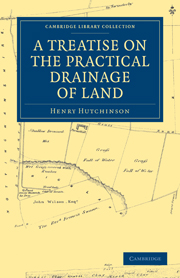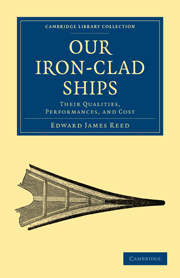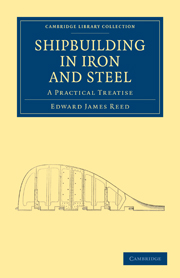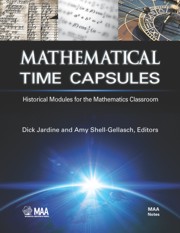Refine search
Actions for selected content:
13588 results in History of science and technology
Michal Simunek, Uwe Hoßfeld, Olaf Breidbach and Miklós Müller (eds.), Mendelism in Bohemia and Moravia, 1900–1930. Stuttgart: Franz Steiner Verlag, 2010. Pp. 276. ISBN 978-3-515-09602-7. €48.00 (paperback).
-
- Journal:
- The British Journal for the History of Science / Volume 44 / Issue 4 / December 2011
- Published online by Cambridge University Press:
- 05 December 2011, pp. 611-612
- Print publication:
- December 2011
-
- Article
- Export citation
Kathleen M. Crowther, Adam and Eve in the Protestant Reformation. Cambridge: Cambridge University Press, 2010. Pp. xii+293. ISBN 978-0-52119-236-1. £50.00/$85.00 (hardback).
-
- Journal:
- The British Journal for the History of Science / Volume 44 / Issue 4 / December 2011
- Published online by Cambridge University Press:
- 05 December 2011, pp. 582-584
- Print publication:
- December 2011
-
- Article
- Export citation
Joel S. Schwartz, Darwin's Disciple: George John Romanes, a Life in Letters. Philadelphia: American Philosophical Society, 2010. Pp. xxiv+806. ISBN 978-1-60618-920-7. $60.00 (paperback).
-
- Journal:
- The British Journal for the History of Science / Volume 44 / Issue 4 / December 2011
- Published online by Cambridge University Press:
- 05 December 2011, pp. 607-608
- Print publication:
- December 2011
-
- Article
- Export citation
Stephen Gaukroger, The Collapse of Mechanism and the Rise of Sensibility: Science and the Shaping of Modernity, 1680–1760. Oxford: Oxford University Press, 2010. Pp. x+505. ISBN 978-0-19-959493-1. £35.00 (hardback).
-
- Journal:
- The British Journal for the History of Science / Volume 44 / Issue 4 / December 2011
- Published online by Cambridge University Press:
- 05 December 2011, pp. 593-595
- Print publication:
- December 2011
-
- Article
- Export citation
What Does the Arrest and Release of Emile Borel and His Colleagues in 1941 Tell Us about the German Occupation of France?
-
- Journal:
- Science in Context / Volume 24 / Issue 4 / December 2011
- Published online by Cambridge University Press:
- 08 November 2011, pp. 587-623
- Print publication:
- December 2011
-
- Article
- Export citation
Some documents bearing on the arrest and release of Emile Borel
-
- Journal:
- Science in Context / Volume 24 / Issue 4 / December 2011
- Published online by Cambridge University Press:
- 08 November 2011, pp. 625-636
- Print publication:
- December 2011
-
- Article
- Export citation
What Management Does to Space Projects: The Franco-Soviet Project ARCAD 3 in the Late 1970s
-
- Journal:
- Science in Context / Volume 24 / Issue 4 / December 2011
- Published online by Cambridge University Press:
- 08 November 2011, pp. 545-586
- Print publication:
- December 2011
-
- Article
- Export citation
Why Were Biological Analogies in Economics “A Bad Thing”? Edith Penrose's Battles against Social Darwinism and McCarthyism
-
- Journal:
- Science in Context / Volume 24 / Issue 4 / December 2011
- Published online by Cambridge University Press:
- 08 November 2011, pp. 465-485
- Print publication:
- December 2011
-
- Article
- Export citation
A Model for the Division of Semiotic Labor in Scientific Argument: The Interaction of Words and Images
-
- Journal:
- Science in Context / Volume 24 / Issue 4 / December 2011
- Published online by Cambridge University Press:
- 08 November 2011, pp. 517-544
- Print publication:
- December 2011
-
- Article
- Export citation
Credibility Engineering in the Food Industry: Linking Science, Regulation, and Marketing in a Corporate Context
-
- Journal:
- Science in Context / Volume 24 / Issue 4 / December 2011
- Published online by Cambridge University Press:
- 08 November 2011, pp. 487-515
- Print publication:
- December 2011
-
- Article
- Export citation
SIC volume 24 issue 4 Cover and Front matter
-
- Journal:
- Science in Context / Volume 24 / Issue 4 / December 2011
- Published online by Cambridge University Press:
- 08 November 2011, pp. f1-f3
- Print publication:
- December 2011
-
- Article
-
- You have access
- Export citation
SIC volume 24 issue 4 Cover and Back matter
-
- Journal:
- Science in Context / Volume 24 / Issue 4 / December 2011
- Published online by Cambridge University Press:
- 08 November 2011, pp. b1-b12
- Print publication:
- December 2011
-
- Article
-
- You have access
- Export citation

A Treatise on the Practical Drainage of Land
-
- Published online:
- 05 November 2011
- Print publication:
- 19 May 2011
- First published in:
- 1844

Archaeoastronomy in the Old World
-
- Published online:
- 05 November 2011
- Print publication:
- 05 August 1982

Our Iron-Clad Ships
- Their Qualities, Performances, and Cost
-
- Published online:
- 05 November 2011
- Print publication:
- 19 May 2011
- First published in:
- 1869

Shipbuilding in Iron and Steel
- A Practical Treatise
-
- Published online:
- 05 November 2011
- Print publication:
- 17 February 2011
- First published in:
- 1869

Mathematical Time Capsules
- Historical Modules for the Mathematics Classroom
-
- Published by:
- Mathematical Association of America
- Published online:
- 26 October 2011
- Print publication:
- 13 May 2011
-
- Book
- Export citation
Life, DNA and the model
-
- Journal:
- The British Journal for the History of Science / Volume 46 / Issue 2 / June 2013
- Published online by Cambridge University Press:
- 20 October 2011, pp. 311-334
- Print publication:
- June 2013
-
- Article
- Export citation
The limits to ‘spin-off’: UK defence R & D and the development of gallium arsenide technology
-
- Journal:
- The British Journal for the History of Science / Volume 45 / Issue 1 / March 2012
- Published online by Cambridge University Press:
- 20 October 2011, pp. 97-121
- Print publication:
- March 2012
-
- Article
- Export citation
Gur, Ghur, Guhr or Bur? The quest for a metalliferous prime matter in early modern times
-
- Journal:
- The British Journal for the History of Science / Volume 46 / Issue 1 / March 2013
- Published online by Cambridge University Press:
- 20 October 2011, pp. 23-37
- Print publication:
- March 2013
-
- Article
- Export citation
